Responsive Space Research & Technology Center (RSTEC)
Research about technologies and concepts for a resilient space infrastructure and the responsive provision of space-based capabilities requires research done on ground.
For this purpose, a research environment was set up at the DLR site in Trauen (Lower Saxony). The RSTEC (Responsive Space Research and Technology Centre) houses clean room laboratories totalling 4 clean rooms of approximately 40 square meters each within an air-conditioned rapid construction hall.
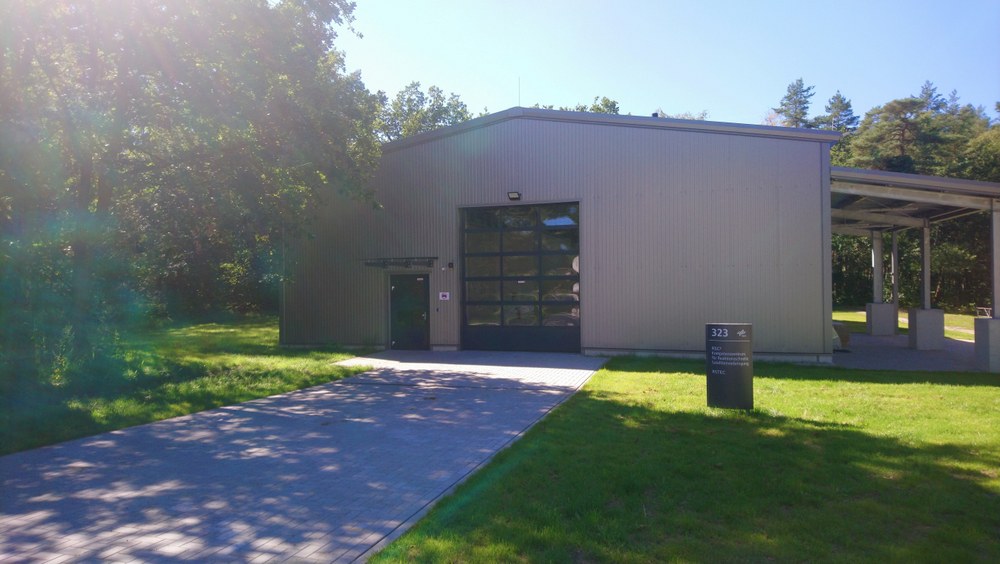
In RSTEC hands-on research activities on small satellites are carried out together with industry, in order to be able to react in a more responsive manner to upcoming space capability demands:
- Accelerate satellite integration and test cycles through hardware-in-the-loop tests
- Standardised interfaces, modularity and plug & play methods between payloads and satellite platforms
- Process optimisation and automation in satellite development
- Development of a database for analysing and evaluating commercial satellite hardware
- Service life, storage and reactivation tests in the event of a responsive demand
There are three interconnected cleanroom laboratories within the RSTEC. The direct connection between the laboratories is an advantage for smooth transport and for cross-laboratory test campaigns. RSTEC also has a vibration test laboratory, which is separate from the other laboratories in order to rule out the effects of vibrations on the environment. All laboratories are equipped with personnel airlocks and can create an air-conditioned ISO8 cleanroom environment via ventilation systems. If required, the cleanroom class can be improved locally to ISO 5 (in accordance with DIN ISO 14644-1) using laminar flow boxes.
The laboratories are equipped with the following facilities:
Attitude control testbed
The attitude control testbed simulates the attitude dynamics of a satellite in a representative orbital environment. The test stand includes:
- Air bearing table on which satellites (models) of different classes can rotate almost friction-free around three axes of rotation (mounting plate can be rotated 360 degree around the vertical axis, can be tilted horizontally by approximately 25 degree)
- Adapter for mounting CubeSat test specimens
- Magnetic field simulation
- Solar simulation
- Star simulation (incl. simulation of planets, sun, scattered light and proton fluxes)
- Payload power supply and WLAN interface for operation
- Electrically controllable centre of gravity calibration
- Infrared tracking system to determine the orientation of the satellite on the air bearing table and to display the simulated position
Current research topics at the attitude control test stand:
- Automation and acceleration of the early operational phase of satellites (LEOP)
- Optimisation of attitude control algorithms
- Long-term attitude evaluation and influences of disturbances in (V)LEO
Verification of attitude control sensors and actuators
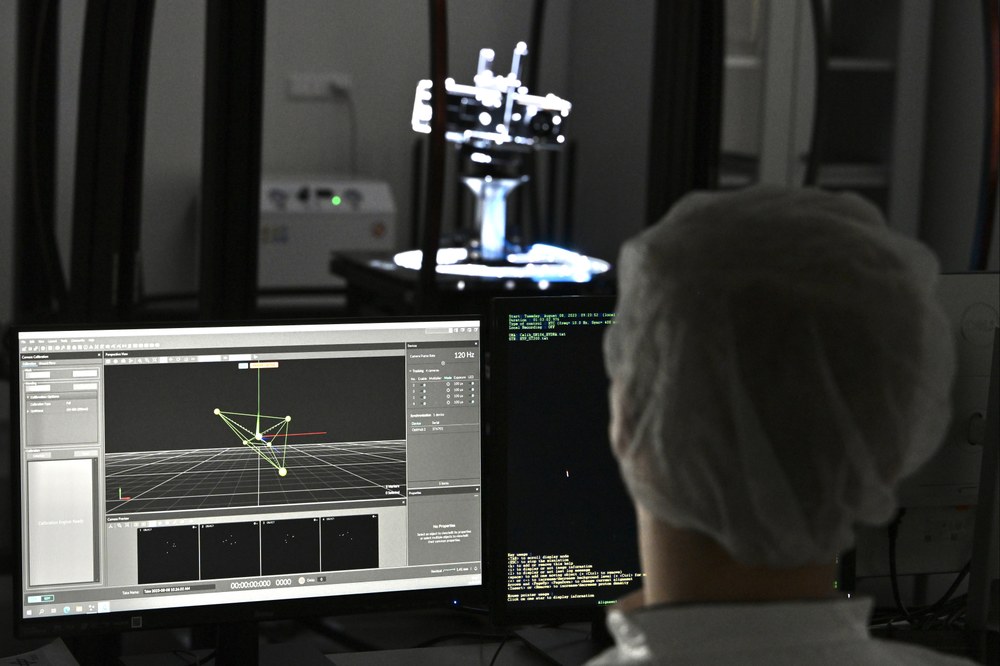
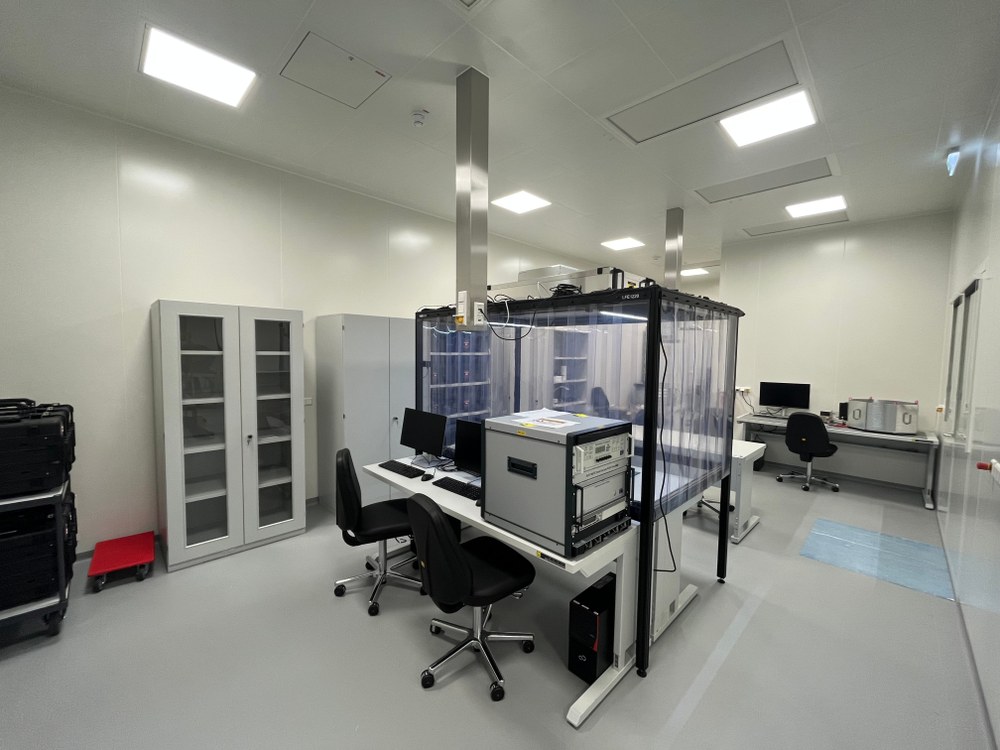
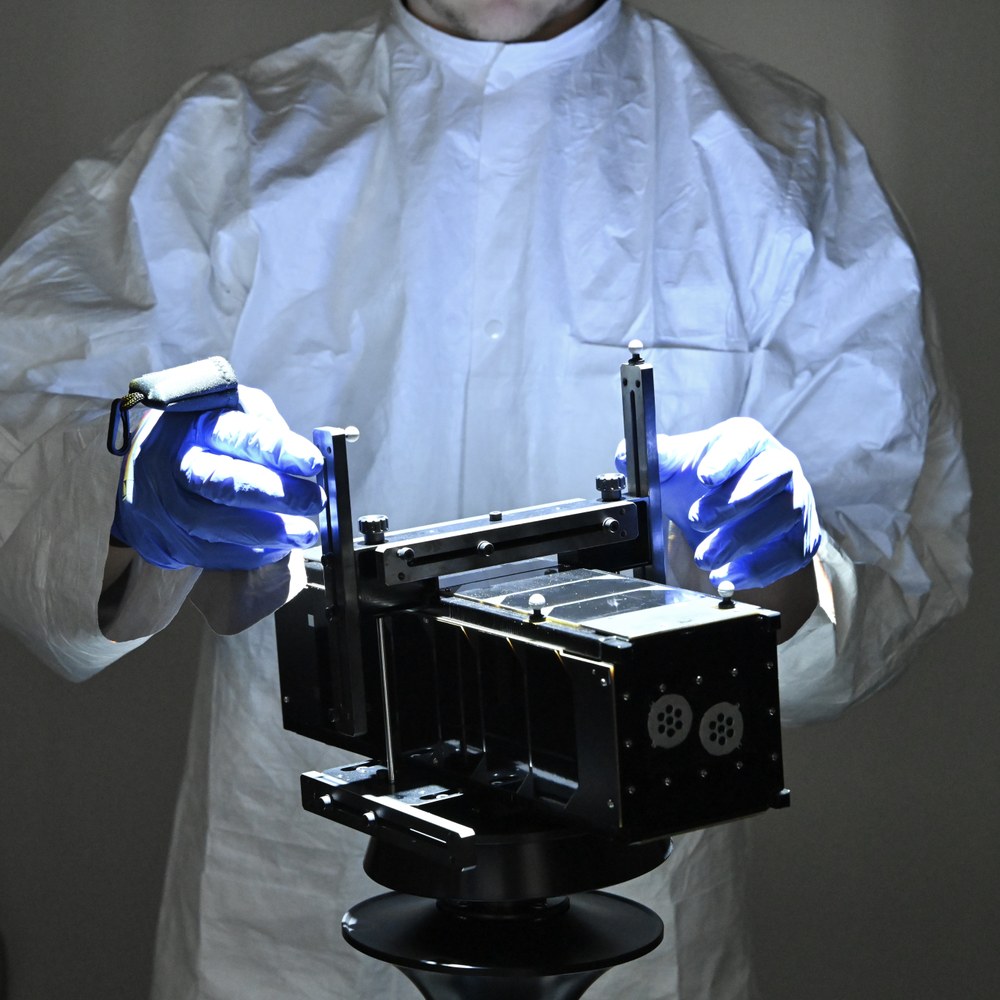
Integration laboratory of the RSTEC
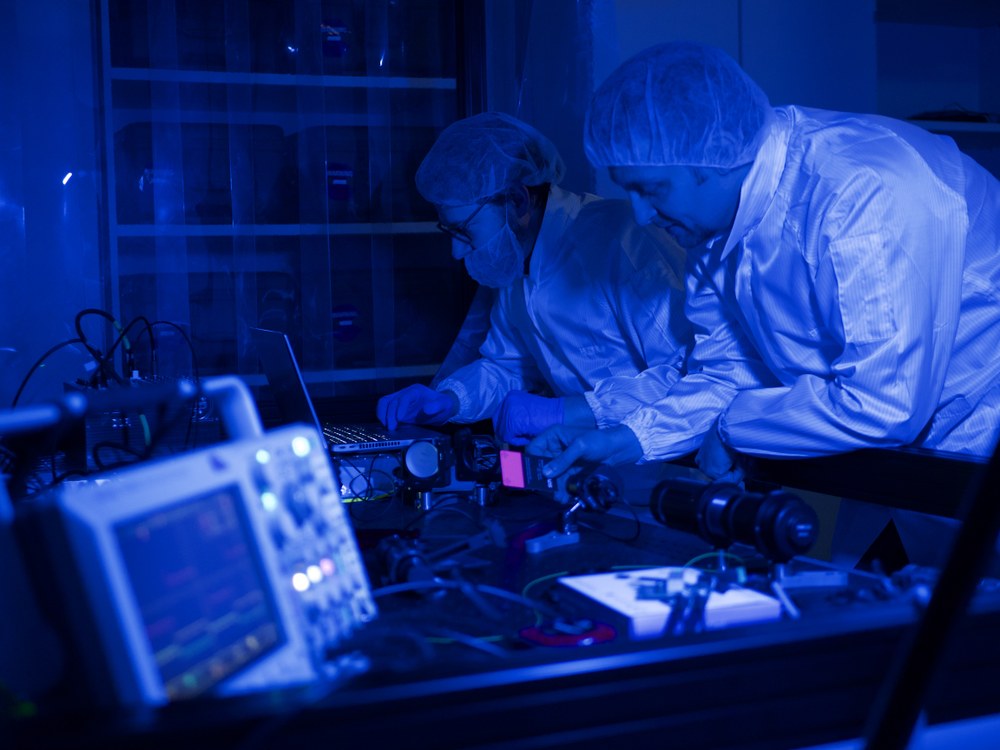
The RSTEC integration laboratory is directly connected to the position control test stand laboratory.
This ISO8 clean room houses satellite platforms from various manufacturers with different functions, sizes and performance. These provide a hardware-in-the-loop test environment as a basis for research and for evaluating and analysing the following topics:
- Compatibility, modularity, scalability of payloads and platforms
- Reconfigurability of on-board computers and payloads in orbit through the use of suitable simulators
- Interfaces to payloads and ground stations (TM/TC Front End and PCDU Simulator)
- cross-platform standardisation of hardware and software
- Payload combinations on larger platforms (up to 150 kilogram)
- Miniaturisation of components
The picture also shows a laminar flow box, which enables work to be carried out under locally increased clean room conditions.
Vibration test system
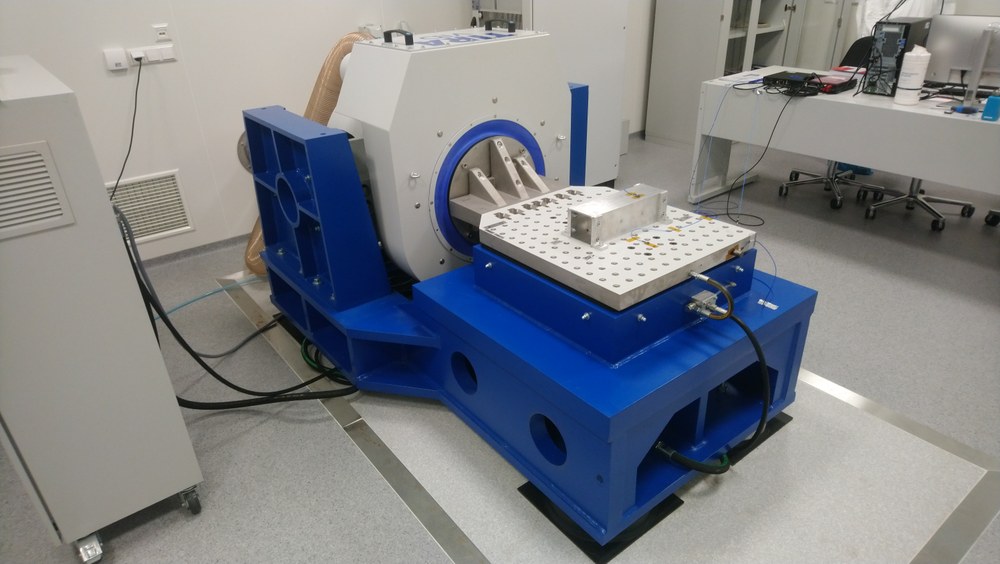
In order to test mechanical stresses on main structures, subsystems and components with their various load scenarios, one of our clean rooms is equipped with a powerful 35 kilonewton vibration test system.
This allows vibration tests to be carried out to simulate dynamic mechanical loads, such as those that occur mainly during rocket launches, but also during orbit and attitude control maneuvers or separation processes.
The "shaker" is mounted on an isolated basis and has a clamping surface of 600 x 600 millimeter, which is capable of exciting test specimens with a mass of up to 500 kilogram. The system is primarily designed for the following types of excitation:
- sinusoidal excitation (sine sweep)
- noise excitation (random vibration)
Transient and shock loads can be simulated to a limited extent using shock excitation.
The shaker itself can be rotated through 90 degree, which allows axial test loads to be tested in any main axis. Vibration tests under ISO 8 are possible via an integrated cooling air circuit and with the help of the air-conditioned, separate clean room environment.
Thermal vacuum chamber
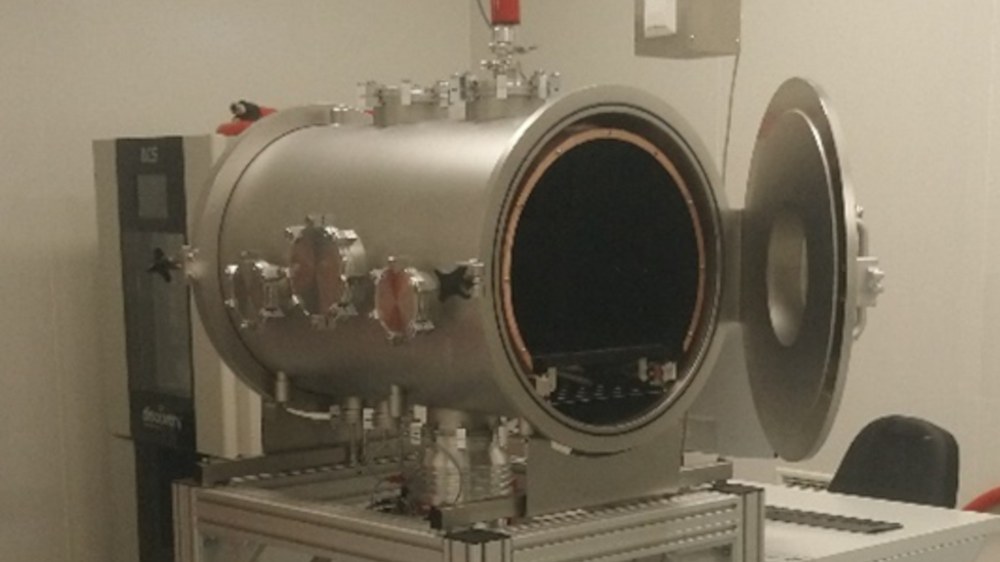
In contrast to mechanical tests, thermal tests are essential to qualify a satellite for future use in space. The harsh, inhospitable space conditions with enormous temperature gradients, the vacuum and different radiation sources constantly affect the thermal balance of the satellite and its subcomponents.
For the purpose of simulating this space environment, a high-quality thermal vacuum system complements our test system portfolio. The customized setup meets our future mission and research requirements and includes the following core components:
- thermal vacuum chamber with a capacity of approx. 250 litre, including a retractable thermal plate, which enables a test volume of approx. 700 x 300 x 300 Cubic millimeter to be accommodated
- high-performance pump configuration with a vacuum quality of < 10-7 millibar
- high-precision process thermostat, which can cover temperature ranges from -60 degrees Celsius to +120 degrees Celsius
- internal and external sensor equipment for test bench monitoring and measurement, for example using Pt 100 temperature sensors
Equipped with this equipment and know-how, the following tests can be carried out on our system:
- thermal balance tests (using heated thermal plates)
- bakeout tests
- thermal-vacuum cycle tests
Climate chamber
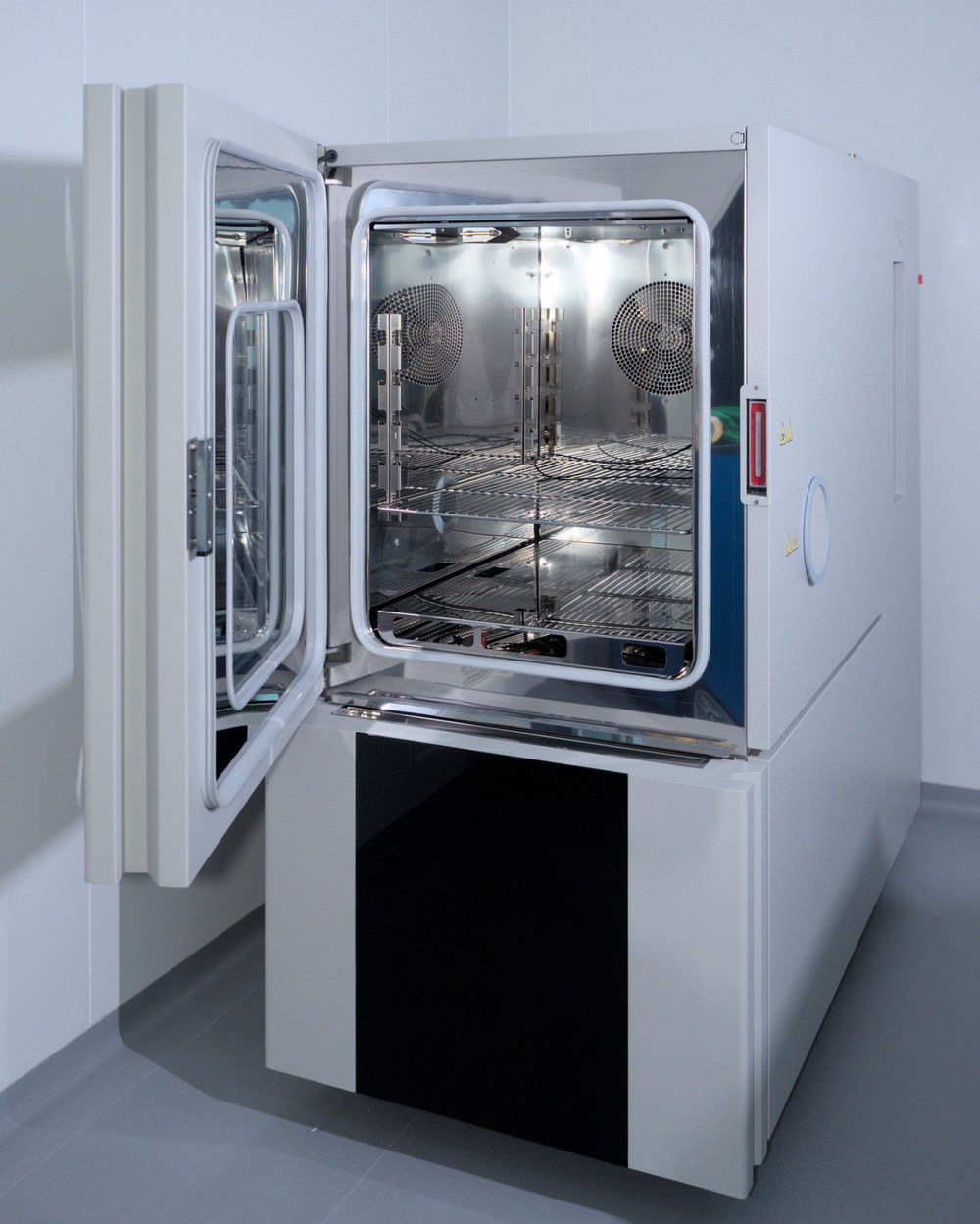
Due to recurring thermal load cycles, flight hardware in aerospace technology is subject to high quality requirements in terms of material and durability.
In addition, there is a climate chamber in the clean room for thermal testing and environmental simulation. Precisely because a satellite undergoes many temperature cycles within a day in its low-Earth orbit, this facility is predestined for thermal cycling testing and thus provides information on the lifetime durability of flight models and their subcomponents.
- a test chamber volume of > 300 litres enables testing of small satellites in temperature ranges from -40 degrees Celsius to +130 degrees Celsius
- reliable temperature measurement with Pt 100 temperature sensor class A ensures that the requirements are met
Thanks to its extensive equipment, the climate chamber is ideally suited for qualification and acceptance tests, especially for the following test types:
- thermal cycling tests
- more intensive bakeout tests for components with higher outgassing potential
TULBE (Transport- and Storage container)
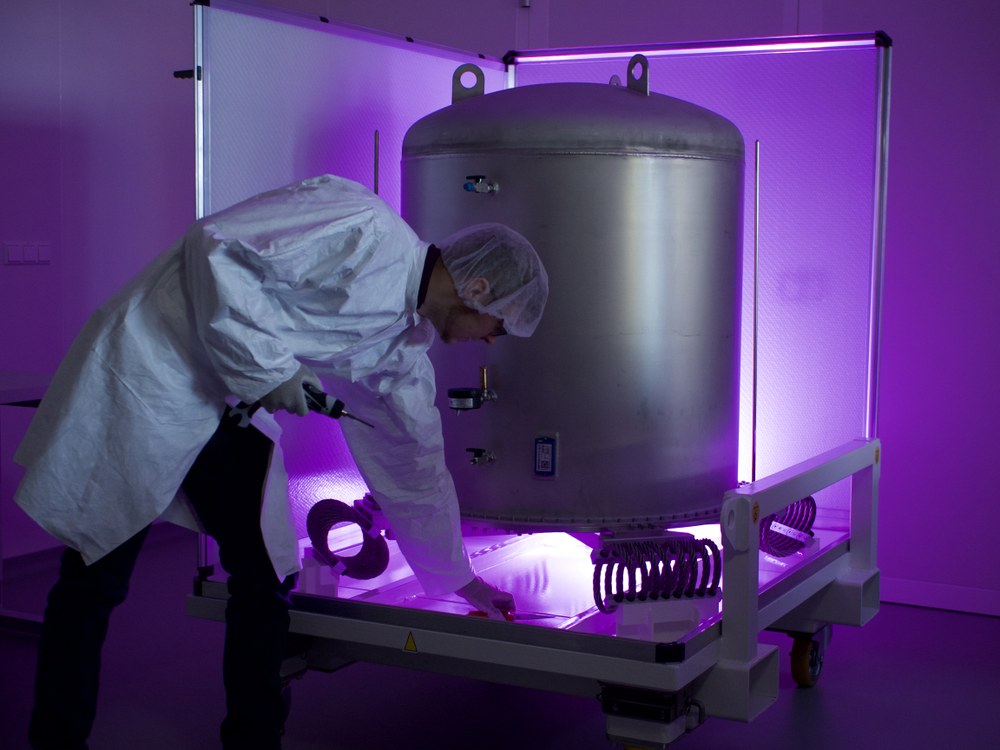
The purpose of the transport and storage container (TULBE) is to research the ageing and long-term storage of (small) satellite components in a controlled environment. The rapid reactivation and transport of functional systems is tested here.
The pressurised container can be flushed with nitrogen, is mounted on vibration and shock absorbers and can be used for safe transport in a short time by means of a rollable stacking system.
